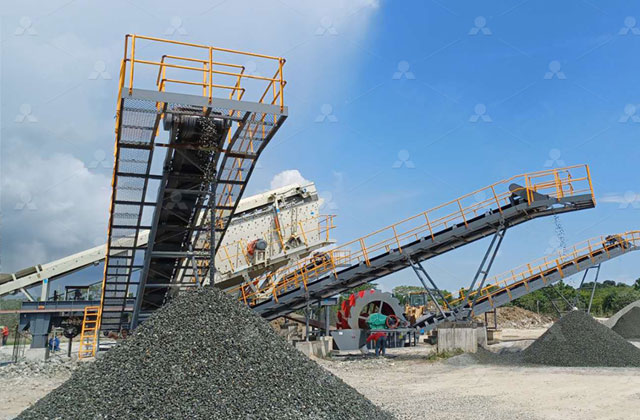How to configure the aggregate crushing plant
An aggregate crushing plant is essential for producing the crushed stone or gravel needed in construction, road building, and infrastructure projects. Proper configuration of an aggregate crushing plant ensures efficient operation, high productivity, and quality output. If you’re planning to set up or optimize an aggregate crushing plant, here’s a step-by-step guide on how to configure it effectively.

1. Understand Your Project Requirements
Before configuring the plant, clearly define your goals:
-
Type of aggregate needed (size, quality, gradation)
-
Production capacity (tons per hour)
-
Type of raw material (limestone, granite, basalt, river gravel, etc.)
-
End-use of the aggregate (road base, concrete aggregate, asphalt, etc.)
Knowing these details helps you choose the right equipment and plant layout.
2. Select the Right Crushing Equipment
An aggregate crushing plant usually involves several crushing stages:
Primary Crusher
-
Handles large raw rocks.
-
Usually a jaw crusher or gyratory crusher.
-
Reduces the size to a manageable feed size for secondary crushing.
Secondary Crusher
-
Further reduces the size.
-
Commonly a cone crusher or impact crusher.
-
Ensures the aggregate reaches the desired intermediate size.
Tertiary Crusher (Optional)
-
Provides final shaping and sizing.
-
Usually a vertical shaft impact crusher (VSI) or cone crusher.
-
Produces high-quality, cubical aggregates.
3. Design the Screening System
Screens separate crushed materials into different size fractions. Proper screening is critical for product quality:
-
Use vibrating screens with multiple decks.
-
Screens must be matched to crusher output and desired product sizes.
-
Consider pre-screening before crushing to remove fines and reduce wear on crushers.
4. Plan Material Handling and Conveying
Efficient material flow reduces downtime and improves productivity:
-
Install belt conveyors to transport material between crushers and screens.
-
Include feeders (grizzly or vibrating) to regulate the material flow to the primary crusher.
-
Consider stackers or silos for stockpiling finished products.
5. Layout Planning
The plant layout affects operational efficiency and safety:
-
Position crushers and screens in sequence for smooth material flow.
-
Provide adequate space for maintenance and repairs.
-
Consider dust control measures, such as water sprays or dust collectors.
-
Ensure easy access for trucks and loaders.
6. Power and Control Systems
-
Assess the total power requirements of all equipment.
-
Choose electric motors with suitable capacity.
-
Implement control systems for start/stop, speed regulation, and monitoring.
-
Consider automation to improve consistency and reduce labor.
7. Safety and Environmental Considerations
-
Equip the plant with emergency stop buttons and safety guards.
-
Implement dust suppression systems to reduce pollution.
-
Plan for noise control through barriers or equipment enclosures.
-
Comply with local environmental and safety regulations.
8. Testing and Optimization
Once installed, run the plant under different conditions:
-
Monitor output size, production rate, and energy consumption.
-
Adjust crusher settings and screen sizes as needed.
-
Track wear parts’ performance and schedule maintenance.
-
Optimize feeding rates to prevent bottlenecks.
Configuring an aggregate crushing plant requires a holistic approach, combining the right equipment selection, plant layout, and operational practices. By carefully assessing your material, production goals, and site conditions, you can design a crushing plant that maximizes productivity, ensures product quality, and maintains cost-efficiency.
